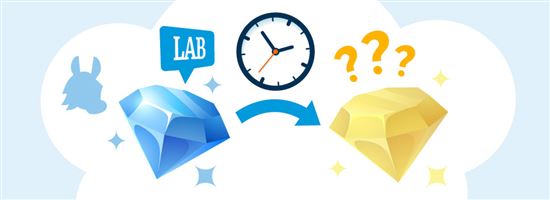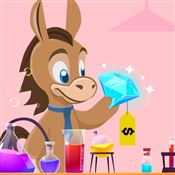Do Lab Created Diamonds Turn Yellow
That gorgeous lab diamond may look icy-white at the store. But will it turn yellow over time? Here's what you need to know.
 |
Nothing's more heartbreaking than seeing your engagement ring turn yellow.
You're probably extra worried about a lab diamond. You're spending thousands on your ring. But if your diamond is man-made, surely it must be prone to yellowing, right?
Not exactly.
Do Lab Diamonds Turn Yellow Over Time?
No need to worry about your ring turning yellow. Your lab diamond will stay as white as it is forever. Because it's a real diamond, you can trust that it's as durable as its mined counterparts. It will never turn yellow or change color over time.
So why do some stones look a bit yellow or blue?
Like mined diamonds, lab-created diamonds can have slight tints. They get it during their growth process, so it doesn't mean their color has changed. The amount of tint determines the color grade you will see on the diamond's certificate.
Nope, lab-created diamonds never lose their sparkle. Note that they have the exact same properties as natural diamonds, including hardness. As the hardest substance on earth, lab-created diamonds won't scratch, fade, or get cloudy.
But Why Does My Lab Diamond Look More Yellow Now?
Think your lab-grown diamond looks more yellow than before? Don't panic.
The #1 culprits behind yellowing diamonds are oil and dirt. When oil, dirt, and other substances like dust and soap build-up, they can form a yellowish layer on your stone. At-home or professional cleaning should return your lab diamond's sparkling glory.
So just because your lab diamond looks more yellow now doesn't mean that it's fake.
You can definitely take your lab-grown diamond ring to the water. Showering, swimming, or washing with your lab diamond won't destroy the stone. But they can cause a buildup of chemicals and dirt that make your stone look dull.
Very Rare Case of Lab Diamonds Turning Yellow
You probably read how some lab diamonds changed in color after exposure to heat and UV light. But that's not really a cause for concern.
The diamonds used in the study were all very poor quality. Most looked so dark, they were brown or had a T color grade. It's almost impossible to find lab-created diamonds like these sold in stores.
Plus, the stones were exposed to extreme heat and radiation. There's a slim chance you'll find yourself in these conditions in your daily life.
Your lab-created diamond is forever. Remember that lab-created diamonds share the same properties as natural diamonds. They're equally durable and long-lasting. To find high-quality options, explore the best places to buy lab-created diamonds.
Why are Some Man Made Diamonds Yellow?
As you might know, both lab-grown and natural diamonds come in different color grades. That's why they're ranked on a scale from D (whitest) to Z (light yellow or brown).[1] The most valuable are the super-white stones. But most diamonds show a slight yellow tint.
The yellow hue appears when the diamond contains traces of nitrogen.[2] The more tint the stone has, the less valuable it will be. So yellowish stones sometimes go through treatments to make them whiter.
But what about those beautiful canary-yellow diamonds?
Let's talk about them.
Lab-Grown Fancy Yellow Diamond
Sometimes, diamonds get very high levels of nitrogen, and they go past the D-Z color scale. They become the vibrant fancy yellow diamonds loved by many.
Natural yellow diamonds are rare and expensive, with only 1 out of 10,000 mined carats being yellow. Fancy vivid yellow stones, known as canary-yellow diamonds, are the rarest and most expensive.
But with lab-created yellow diamonds, it's easier to insert nitrogen into the growth process. They can be made on demand, so they're a lot cheaper than natural yellow diamonds. They're a great option if you want a stunning and unique diamond color without breaking the bank.
To compare, this 1.2-carat canary yellow natural diamond costs a whopping $41,830. You can buy a similar quality 1.2-carat canary yellow lab diamond for only $5,350.
No, the average person can't tell a lab-grown diamond. Even expert jewelers with their loupes and microscopes can't. The only way to detect a lab diamond is by sending it to a specialized lab.
How to Keep Your Lab Diamond White and Sparkly
Is your lab diamond looking more yellow than before? That's just part of normal wear. But you can prevent or treat this by taking good care of your ring.
Here's how you can maintain your lab-grown diamond:
- Take off your lab diamond ring
Take off your ring during any activity that can cause dirt and chemical buildup. This includes showering, putting on lotion, and exercising. They won't destroy your diamond, but their buildup can make it look more yellow. - Store your ring properly
A buildup of dust can also make your lab-created diamond look more yellow. When taking your ring off, store it away from dusty places. A well-kept jewelry box can keep your ring from getting dusty and getting misplaced. - Clean your ring regularly
No matter how careful you are with your ring, it's always a good idea to clean it regularly. Gentle at-home solutions like cleaning with soap and water often do the trick. But you can also take your ring to professional cleaners if it needs thorough treatments.
FAQS
- Do lab diamonds lose their sparkle?
Nope. Your lab-created diamond will look as sparkly as it is forever. Remember, it's the exact same stone as a natural diamond. This makes it just as durable and sparkly. - Do lab-grown diamonds have fluorescence?
Yes, some lab-created diamonds can also glow under UV light. Fluorescence affects lab-grown diamonds and natural diamonds similarly. It can affect appearance and price in a good or bad way. - Can lab diamonds be colored?
Lab-grown diamonds can also come in fancy colors. Fancy-colored natural diamonds are super-rare and expensive. But colored lab-created diamonds can be made on demand. This makes them cheaper but equally stunning alternatives. - Do lab-grown diamonds hold value?
The resale value of lab-created diamonds is very low. In general, you're not supposed to treat any diamond, whether mined or lab-grown, as an investment. But the secondhand value for lab-grown diamonds is worse.
Bottom Line
Your icy white ring won't break your heart by turning yellow with time. But normal wear can still leave it looking more yellow than before.
Thankfully, there's nothing that a bit of TLC can't do.
A lab-created diamond is just as indestructible as a natural diamond. Just take good care of your ring. And your lab diamond will stay as white as it did on the day you first fell in love with it.
References
- ^ GIA. GIA 4Cs Color, Retrieved 9/18/22
- ^ GIA. "Naturally Colored Yellow and Orange Gem Diamonds: The Nitrogen Factor" Gems & Gemology (2020), Retrieved 9/18/2022
Write to Chesca Santiago at feedback@creditdonkey.com. Follow us on Twitter and Facebook for our latest posts.
Note: This website is made possible through financial relationships with some of the products and services mentioned on this site. We may receive compensation if you shop through links in our content. You do not have to use our links, but you help support CreditDonkey if you do.
|
|
|







